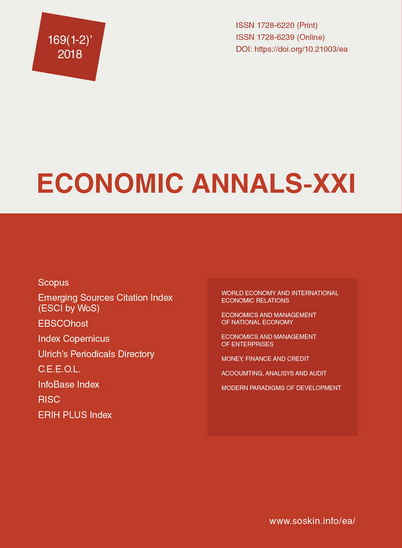Composite fuel poverty index as a means to assess energy security of the country
Composite fuel poverty index as a means to assess energy security of the country
Author(s): Nadiia Pysar, Victoria Dergacheva, Andriy Bandura, Janka PásztorováSubject(s): Economy, Energy and Environmental Studies
Published by: Institute of Society Transformation
Keywords: Methodology; Energy Security; Composite Index; Models; Fuel Poverty; Costs; Income; Prices; Fuel and Energy Resources; Energy Inefficiency;
Summary/Abstract: Introduction. The issues of strengthening Ukraine’s energy security are related to addressing the insufficient understating of its essence, nature and criteria for assessing the vulnerability of the national economy. The need to improve the existing methodology for calculating the overall performance of energy security assessment is considered to be relevant due to the insufficient level of research on related issues and inconsistency of individual aspects. The composite fuel poverty index by region provides information on energy efficiency of households in different regions and helps to assess the level of poverty of the regions derived from the analysis of the consumption of fuel and energy resources by households in the regions, the pricing policy in Ukraine’s energy market, as well as the income and expenditure level of households. The purpose is to develop a methodology for determining the composite fuel poverty index by region, revealing the principal factors of its formation, and to identify ways of improving the country’s social and economic security in the context of energy market deregulation. The results of the study reveal indicators that allow assessing the consumption of fuel and energy resources by households by region in qualitative and quantitative terms, taking into account the nonlinearity of economic processes in the context of economic transformation. The problems relating to the implementation of social and economic policy of the state are revealed in the context of the Ukrainian energy market deregulation. The authors of the research have developed an analytical model of the energy inefficiency of Ukrainian regions, as well as a model for estimating the fuel poverty index of relevant regions (FPIi ) by using the monetary poverty indicator Pi and the energy inefficiency indicator Ici , i.e. the cost of all energy resources consumed by average households of a region calculated as a unit area. In the 2012-2016 period, the fuel poverty index was established in the range from 0.5 to 0.65. However, the index fluctuations are affected to a great extent by increases in prices on fuel and energy resources, with a high value of the index being indicative of a low level of personal income and high expenditures on fuel and energy resources for Ukrainian households. Conclusion. The calculation of the composite fuel poverty index makes it possible to determine the regions with low incomes and high energy consumption with regard to 1 sq.m of household area. The proposed methodology can become an integral part of the analytical assessment of regions’ energy security. The calculation results for Ukraine show that the share of fuel and energy costs as part of household costs exceeded 10% of households’ income threshold for 2012-2016, resulting in low living standards of the population and hardship in meeting basic needs. Further increase in fuel and energy prices will bring about an increase in social tension.
Journal: Економічний часопис - ХХІ
- Issue Year: 169/2018
- Issue No: 01+02
- Page Range: 50-56
- Page Count: 7
- Language: English

